Crossover SUVs have become as popular as fireworks on the Fourth of July – which is why the cost of crossovers continues to increase.
But there is an antidote to the high cost of being popular.
It’s the Nissan Kicks.
If you’re willing to forgo just one thing.
The Kicks is Nissan’s newest, smallest – and most affordable – crossover SUV.
It’s similar in general layout and size to other compact crossovers like the Honda HR-V and Subaru Crosstrek, but it costs significantly less – $18,540 to start for the base S trim vs. $20,520 for the base trim Honda HR-V and $21,895 for the base trim Crosstrek.
A top-of-the-line SR stickers for $20,870.
So what’s the catch?
The Kicks doesn’t offer all-wheel-drive, as most of its crossover brethren do.
But it does come standard with class-best fuel economy (31 city, 36 highway vs. 28 city, 34 highway for the HR-V and 23 city, 29 highway for the Crosstrek) class-best legroom up front (43.7 inches) and class-best cargo space behind its second row (25.3 cubic feet).
And it’s quicker than it’s AWD-equipped rivals – because it’s lighter.
It also has a smaller overall footprint (169.1 inches, bumper to bumper) which – along with a very tight turning radius (34.1 feet) makes it exceptionally easy to park and maneuver in the heavy urban/suburban traffic which Nissan demographers see as this little crossover’s natural environment.
The Kicks was introduced as an all-new model for 2018, just a few months ago – so other than a few trim/color changes and a $500 price uptick -Last year’s Kicks started at $17,990 – the 2019 carries over largely the same.
WHAT’S GOOD
Among the most affordable small crossovers available.
Exceptionally roomy up front – and behind the back seat.
Class-best gas mileage.
Backseat legroom (33.2 inches) is noticeably less than several others in this class.
Very small gas tank (just 10.8 gallons) makes the Kicks seem thirstier than it actually is.
Automatic (CVT) only transmission; a manual would have made it more of a kick to drive.
UNDER THE HOOD
All Kicks trims come standard with identical drivetrains – a 1.6 liter four cylinder engine making 122 horsepower paired with Nissan’s Xtronic continuously variable (CVT) automatic transmission and front-wheel-drive.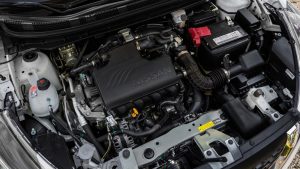
While AWD isn’t offered, it does come standard with 7 inches of ground clearance, which is almost as good as having AWD – and definitely costs less. And not just in terms of price.
Though the Kicks’ engine produces a bit less horsepower than rivals’ standard engines – the Subaru Crosstrek’s larger 2.0 liter engine makes 152 horsepower; the HR-V’s 1.8 liter engine 141 – the Kicks itself is quicker than these rivals.
It gets to 60 in 9.5 seconds vs. closer to 10 for the Crosstrek and HR-V.
Probably because it’s a lighter (just over 2,600 lbs. vs. just over 3,100 for the Crosstrek) because it doesn’t offer all-wheel-drive.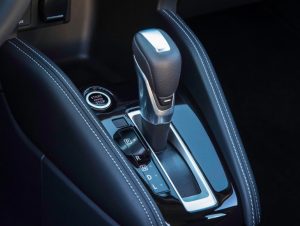
AWD ups both traction . and curb weight.
Because it’s lighter, the Kicks gets noticeably better gas mileage, too – another money saver.
The Nissan’s 31 city, 36 highway is better than some economy cars – and significantly better than the Subaru Crosstrek’s 23 city, 29 highway (with the standard manual transmission; the automatic-equipped version does a bit better, 27 city, 33 highway).
The Nissan also beats the Honda HR-V’s previously class-best 28 city, 34 highway.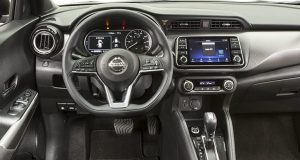
However, the Kicks has a really small gas tank – just 10.8 gallons. The Crosstrek’s tank holds 16.6 gallons; the HR-V’s 13.2 gallons. So even though both use more gas, you’ll have to gas up just as often in the Nissan.
As to why the Kick’s tank is so small . . .
Nissan probably decided it was more important to the people buying the Kicks to have a larger cargo area. The space under the floor not eaten up by a bigger gas tank enabled the designers to maximize the available space on the other side of the floorpan.
The Kicks may have a small tank – but it doesn’t have ASS – automatic stop-start. It is one of a dwindling number of new cars without this de facto government-mandated “fuel saving” feature – which doesn’t actually save very much fuel but does add to the car’s price as well as to ownership costs, via decreased battery life (guess what powers all that stop-starting?) as well as detracts from the driving experience by interrupting it, constantly.
For those who dislike ASS – which seems to be almost everyone – this by itself is almost reason enough to buy the Kicks vs. its ASS-equipped rivals.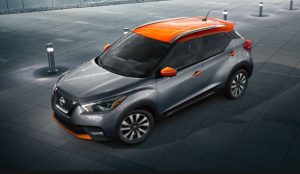
One more thing: The Kicks also hasn’t got direct injection. It is one of the very few 2019 model year cars – at any price point – you can find without it.
Which is not a bad thing.
DI has some advantages – the main one being that it enables an engine to run a higher compression ratio – and a higher CR is beneficial for power as well as mileage. But those upsides are countered by having to burn more expensive premium fuel to get the improved mileage/performance and by the higher cost and complexity of the system.
DI operates at several thousand PSI – vs. about 40 for a port fuel injection system – and has been associated with carbon fouling problems down the road (and out of warranty).
In an economy-minded car such as the Kicks, a simpler, port fuel injection system arguably makes a lot more sense than DI.
And it’s nice that it burns regular unleaded fuel.
Nissan markets the Kicks as an urban/suburban runabout – which is why it doesn’t offer AWD. Even when it snows, the streets are usually cleared pretty quickly in downtown areas.
But it does have generous ground clearance (7 inches) and suspension articulation, which isn’t so much for off-roading as it is for dealing with (and soaking up) bumpy, pot-holed city/suburban streets.
This it does very well – probably because it has a very long wheelbase (103.1 inches) relative to its overall length (169.1 inches). The slightly longer overall Honda HR-V (170.9 inches) has a shorter wheelbase (102.8 inches) and while these differences may seem small in paper, they can matter a great deal in terms of how a care rides – especially on not-so-great roads.
The Kicks’ abbreviated overall dimensions – it’s almost six inches shorter overall than the Subaru Crosstrek – also enable it to take advantage of curbside parking rivals have to pass by, while its tight turning circle lets it make U-turns without stopping, backing up, turning the wheel again and then proceeding.
In urban-suburban traffic, that matters as much as passing gear prowess in a car that operates outside the urban jungle.
And even outside its natural element, the Kicks does okay. It’s not by any stretch a speedy car, but it’s not as slow a car as some others. The main challenge with any of these is to think about where you want to be in time to get there.
Take advantage of the ebb and flow of traffic. Look for – and exploit – openings in traffic. Build speed before you need it.
With a running start – and some paying attention – driving a car like this can actually be more entertaining than piddling along in a more powerful car whose power is dashed against the futility of being boxed in by traffic at every turn.
Just remember to keep an eye on the gas gauge. It goes down alarmingly quickly. The Kicks only carries a bit more fuel than some motorcycles.
Also, watch out for the optional 17-inch wheels – if you’re a city dude – or dudette. These large diameter “rims” – with short sidewall tires – don’t like potholes and are much more vulnerable to damage from rubbing up against curbs.
The standard 16s are the way to go here – and your Kicks will have a softer ride, too.
Packaging is important.
People tend to buy something that draws the eye – which the Kicks certainly does.
Five available two-tone color schemes with contrast color lower body trim help the Kicks visually stand out from crossover crowd. The rear quarters kick up at a jaunty angle; the front quarters have molded-in wide body arches.
But it’s this little Nissan’s functionality that really stands out. Front row legroom (43.7 inches) is astounding, greater than in some full-size cars – and there’s twice as much cargo capacity behind the backseats (25.3 cubic feet) as most mid-sized sedans have in their trunks – without even folding them down.
And when you do fold them down, the Kicks’ capacity more than doubles – to 53.1 cubic feet.
The Honda HR-V has a bit more total capacity (57.6 cubic feet) but you have to fold the second row down to access it; with its second row in use, the Honda’s cargo capacity (23.2 cubic) is a bit less than the Nissan’s.
The Kicks’ main deficit is its fairly tight backseat.
There’s only 33.2 inches of legroom – which is about the same as you’ll find in most compact sedans and less than in the Crosstrek (36.5 inches) and much less than in the HR-V, which has an exceptional 39.3 inches of legroom.
You can get some very high-end audio equipment in the not-high-priced Kicks – including a Bose “Personal Plus” surround sound system with a six-channel amplifier and eight speakers (two of them built into the driver’s headrest).
There are also three ways to connect to the audio/infotainment system: AppleCarPlay, AndroidAuto and Nissan’s own system, NissanConnect. All trims come standard with a 7 inch color LCD display and three USB ports.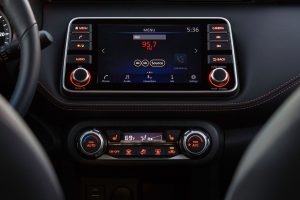
A 360 degree birds-eye-view exterior camera with moving object warning technology is available, too.
THE BOTTOM LINE
If you buy this car, you’ll have money left for going out Friday and Saturday night – as well as a cargo space big enough to crash out in afterward.
That’s a good way to get your Kicks!
…
Got a question about cars – or anything else? Click on the “ask Eric” link and send ’em in!
If you like what you’ve found here please consider supporting EPautos.
We depend on you to keep the wheels turning!
Our donate button is here.
If you prefer not to use PayPal, our mailing address is:
EPautos
721 Hummingbird Lane SE
Copper Hill, VA 24079
PS: Get an EPautos magnet (pictured below) in return for a $20 or more one-time donation or a $5 or more monthly recurring donation. (Please be sure to tell us you want a sticker – and also, provide an address, so we know where to mail the thing!)
My latest eBook is also available for your favorite price – free! Click here. 




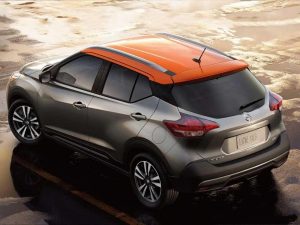

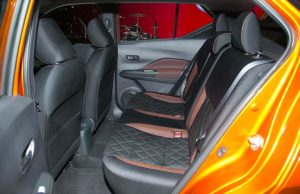
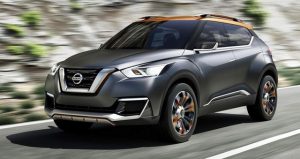
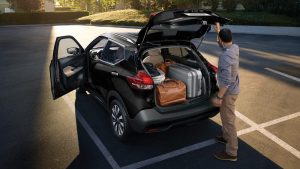
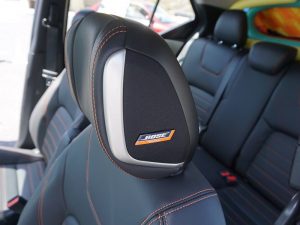







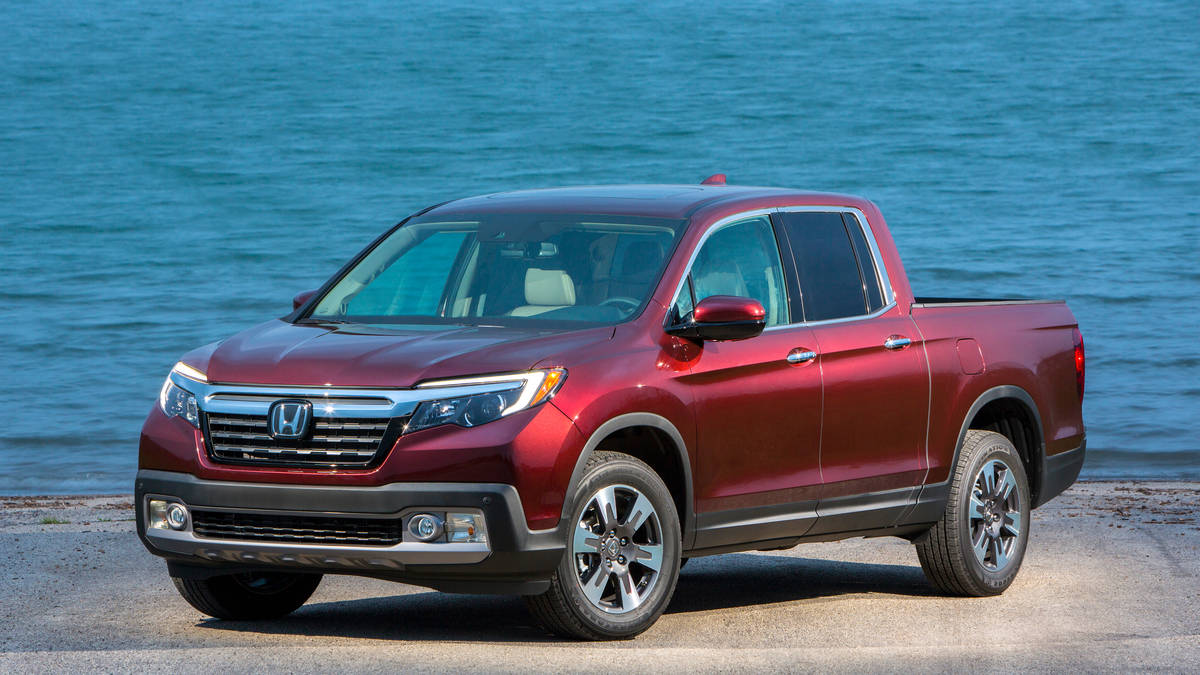
Very late reply, but:
Part of me wants to hate this car on car-guy principle for being a subcompact station wagon jacked up to pretend it’s an SUV. On the other hand… lightish weight, primitive technology, moderate off-road capability? This thing is one manual transmission away from being a true heir to the V6 Cavalier as a Do Everything Car, even if the design philosophies are rather different.
Throw a set of winter treads on that and you probably won’t have any problems in snow. Many urban tire shops will warehouse the off-season tires for you at for a reasonable fee if you don’t have storage in your apartment building.
When did silver and orange become complementary colors ?
I sort of like the 61 Dodge kick up at the C pillar.
Right size, no DI or ASS, low price, excellent fuel economy, versatility and usefulness that has been edited out of four door “coupe” styled sedans…. but a Nissan CVT.
Well, they almost had me.
A neighbor has one of these. IMO it’s over-styled. BUT … it looks better than the anonymous blobs that are many of it’s competitors, like the Chevy Trax (aka Sonic with a lift-kit).
I think they nailed their target audience. Lots of young urbanites need cars, and this is peppy, handles badly-maintained urban streets well, and lets them carry more than just groceries. So far as Nissan selling to value-buyers .. yes they are. The Altima is a good case in point.
Make mine the Kia Soul, with the 201hp turbo, and seven speed dual clutch auto tranny.
Seems like Nissan is going for the “value” buyer lately. And doing it better then what Mitsubishi was doing a few years ago. Nissan never had the blue chip reputation that Honda and Toyota had, so they can’t command the premium price.
In the case of this model, most people really don’t need the 4 wheel drive but like the other characteristic of the form factor (like riding higher, the look of of it, and the cargo space).
Does Nissan save money by not offering a four wheel drive version? I’m sure there is less overall engineering costs that can be passed down to buyers.
I think they will sell lots of these, just because they cost the least. Provided they don’t get a negative reputation.
If a car manufacturer has to allow space for AWD components, then that will reduce space / increase weight for all the non-awd versions.
The same way dropping a V6 engine from the model lineup and going all 4 cylinders saves space / weight for every one of those models.
“It gets to 60 in 9.5 seconds vs. closer to 10 for the Crosstrek and HR-V.
Probably because it’s a lighter (just over 2,600 lbs. vs. just over 3,100 for the Crosstrek) because it doesn’t offer all-wheel-drive.”
It’s not just the weight — that extra 500 pounds would be overcome with 145 HP or so for the Crosstrek, and it has 152 — so it must be because either the Kicks has a much better power curve than the 122 peak HP would suggest, or because that CVT revs the Kicks to 122 HP right away and holds it there, while the Crosstrek is hampered by a non-CVT transmission that spends most of its time below the 152 HP peak.
For example, my Avalon’s V6 has in theory 268 HP at 6200 RPM, but when I stomped on the gas this morning in traffic while heading toward a freeway onramp, by the time it got around to downshifting and then wound up to near 6200 RPM, I’d already gotten up to freeway speeds. With a CVT, I’d have gotten to 6200 RPM pretty much instantaneously.
CVTs can be noisy, but they can also wring the most performance out of an engine.